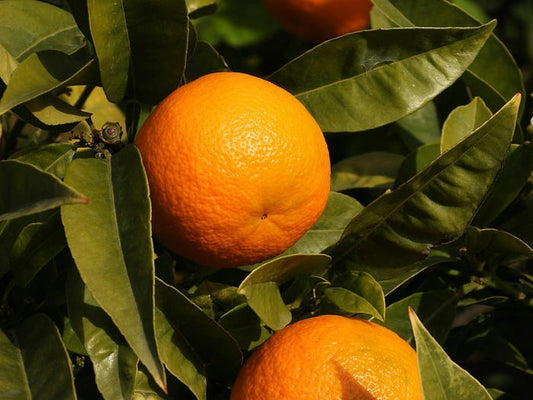
Superfoods: Which You Should Really Be Eating
Oksana RozponczykShare
Superfoods
Superfood is a marketing term, and in reality, the best diet is one that is balanced. But some foods stand out more than others for their sterling nutritional profile, commonly called superfoods. However, most scientists claim that the use of the term superfood is mostly a marketing tool, with no root in academic research.
Superfoods contain a variety of nutrients, such as antioxidants; They also have healthy fats, thought to prevent heart disease; fiber thought to prevent diabetes and digestive problems; and phytochemicals.

No single food can compensate for an unhealthy diet or prevent illness.
Superfood consumption
Consuming nutrient-rich foods is certainly a good idea, it's important to remember that eating a variety of nutritious foods in the right amounts is key to a healthy diet.
Now there are a lot of new products labeled as 'superfood' or 'supergrain' or 'superfruit'. Examples of superfoods are e.g. goji berries or spirulina, which can pack a nutritional punch e.g. 100g of dried goji berries contains 4mg of vitamin A, compared to 2.5 mg in fresh carrot.
Research suggests that superfoods may support and improve overall health, and the immune system through a mix of phytochemicals and high nutrient levels. Also, support the regulation of mood by increasing serotonin level.
According to the U.S. Department of Agriculture USDA, half of the avocado could provide 29 milligrams (mg) of magnesium. Magnesium is very important in our diet as its plays a role in regulating blood pressure and blood sugar, and magnesium deficiency is associated with a higher risk for type 2 diabetes - National Institutes of Health (NIH). Avocado also provides fiber estimated at 6.75 mg per half of the avocado, along with heart-healthy polyunsaturated and monounsaturated fat.
Please, check with your GP or Dietitian before consuming. To book individual consultation with AnaskoMed Clinical Dietitian here.

14 Superfoods and the Scientific Reasons to Eat Them
#1 Garlic
Garlic (Allium sativum) and onion are common vegetables that may contribute to healthy Blood Pressure levels. Garlic also is known for its antibacterial and antiviral properties which contain a lot of antioxidants according to an article in Scientific Reports.
Studies have found allium vegetables such as garlic, onions, leeks, chives, scallions, or shallots, may play a role in preventing cancer.
Garlic has common benefits for people living with diabetes, high cholesterol, and high blood pressure, according to an meta-analysis published in the journal Food Science and Nutrition.
#2 Spirulina
Spirulina is a type of blue-green algae that contains omega-3,6 fatty acids and iron. Good source of antioxidant and anti-inflammatory properties. A tablespoon of spirulina provides a small amount of fat around 1 gram, which includes omega-6 and omega-3 fatty acids.
Spirulina do not contain vitamin B12, it has pseudovitamin B12, which has not been shown to be effective in humans, according to Appl Microbiol and Agric Food Chem.
#3 Blueberries
Blueberries are rich in vitamins, soluble fiber, and phytochemicals. Alternatives are strawberries and cranberries.
Berries are low-calorie, high in fiber, and packed full of antioxidants and nutrients which may prevent certain diseases and improve digestion, also support the fight against cancer-causing free radicals, according to Frontiers in Pharmacology.
Blueberries as well as other kinds of berries are high in phytochemicals known as flavonoids. A high intake of flavonoids may have an impact on reducing the risk of certain heart conditions in young women, according to Journal Circulation found.
#4 Acai
Acai is a grapelike fruit harvested from acai palm trees, commonly used in powder form or solid frozen due to its short lifespan. It is a good source of fiber and antioxidants.
Knowns as benefits ranging from improved skin appearance to weight loss, but not all of these claims are supported by scientific evidence. Alternatives Blueberries and Cranberries.
Recommended is to avoid acai if during pregnancy or breastfeeding because there's insufficient information on its safety for women who are pregnant or breastfeeding.

#5 Oats
Oats are common whole grains that have the whole nutritional package, minerals, antioxidants (including avenanthramides), vitamins, protein, and soluble fiber, according to Harvard.
Oats are whole-grain foods, known scientifically as Avena sativa. Plain wholegrain oatmeal (as porridge) is low on the glycemic index which keeps you feeling fulfilled for a long time.
Oates may support reducing blood pressure and provide other benefits. Alternatives are barley, bulgur wheat, or brown rice.
#6 Ginger
Ginger can be used fresh, dried, powdered, as an oil or juice, or as fresh root. It’s closely related to turmeric, cardamom, and galangal. Suggest anti-inflammatory and antioxidant effects.
Ginger was and continues to be used in traditional and alternative medicine e.g. supports digestion, reduces oxidative stress and nausea symptoms, helps fight the flu and common cold, and more.
Gingerol is the main bioactive compound in ginger. It’s responsible for much of ginger’s medicinal properties. Gingerol has powerful anti-inflammatory and antioxidant effects, according to research Anti-Oxidative and Anti-Inflammatory Effects of Ginger and Biological properties of 6-gingerol. Ginger alternatives turmeric, cardamom, and galangal.
#7 Spinach
Spinach (Spinacia oleracea) is a leafy green vegetable, dietary fiber found in dark greens can decrease the risk of colorectal cancer, according to the American Institute for Cancer Research.
Spinach is also beneficial for skin, hair, and bone health. For example, a 100-gram (g) serving of spinach contains around 28.1 milligrams (mg) of vitamin C Fooddata.
Spinach may also help to improve blood glucose control (especially important in diabetes), lower the risk of cancer, and improve bone health. Alternatives of spinach arugula, kale, collard greens, or lettuce.
#9 Goji Berries
Goji Berries (Wolfberries) contain chemical compounds called phytochemicals, which include polysaccharides, beta-carotene, and zeaxanthin.
Goji berries are a good source of vitamins and minerals, including vitamin C, fiber, iron, vitamin A, zinc, and antioxidants. Around 28g of goji berries have around 100 calories Fooddata.
Helps with vision and macular degeneration, also it is a good source of carotenoids (antioxidation). Goji berries may support treating eye, liver, and kidney issues. Alternatives are carrots and sweet potatoes.
Remember to always talk to your GP or dietitian before you begin eating goji berries, as some components may interact with medications.

#10 Salmon
Salmon, sardines, mackerel, and certain other fatty fish are rich in omega-3 fatty acids, which are thought to lower the risk of heart disease and stroke and excellent foods for healthy skin.
Salmon also contains astaxanthin, which is a chemical compound known as a keto-carotenoid, which gives salmon its pink color.
Astaxanthin has many health benefits e.g. healthier skin, endurance, heart health, joint pain, and may even have a future in cancer treatment, according to research.
It is also an antioxidant and anti-inflammatory. Also, Omega-3s may help reduce inflammation which can lead to a breakdown of collagen and elastin, both of which keep skin looking healthy and youthful, according to Cosmetic benefits of astaxanthin on humans subjects.
Alternatives are sardines, mackerel and certain other fatty fish.
#11 Avocado
Avocado is rich in nutrients that are often lacking in many people’s diets Nutrients. It is a fruit that is a good source of fiber, folate, potassium, magnesium, vitamin E, and unsaturated fatty acids, known as blood cholesterol benefits.
For example, avocado helps to stimulate the immune system thanks to the actuation of C and E vitamins and contributes to keeping healthy skin by the action of E vitamins.
#12 Papaya
Papaya (Carica papaya plant) is a fruit that originated in Central America and Southern Mexico. Research suggests its antioxidant carotenoids, in particular lycopene, are particularly well absorbed, alternatives to Bell Peppers.
Papayas contain high levels of antioxidants vitamin A, vitamin C, and vitamin E support reducing inflammation, fighting disease, and help keep you looking young.
Diets high in antioxidants and fiber may reduce the risk of heart disease. Papaya has folic acid, which is essential for converting the amino acid homocysteine into less harmful amino acids.
Also, papaya may help reduce oxidative stress in older adults and people with prediabetes, mild hypothyroidism, and liver disease according to a study. 1 2 3 4
#13 Chia seeds
Chia seeds are nutrient-rich seeds that are good sources of α-linolenic acid (an omega-3 fatty acid), fiber, protein, vitamins, minerals, and antioxidants. Also, it is a good source of fiber, calcium, and phosphorus.
Chia seeds may promote heart health, support strong bones, and improve blood sugar management according to research. Interesting is that 28 grams of chia seeds have close to 10 grams of dietary fiber, a whopping 35% fiber by weight Fooddate. 5
Additionally, Chia seeds are high in protein and fiber which helps reduce appetite and food intake, and may aid in weight loss treatment. However, studies on chia seeds and weight loss have provided mixed results.
Alternatives are Flaxseeds or Sesame seeds.
#14 Turmeric
Turmeric is commonly used as powder and contains polyphenol curcumin which may help as anti-inflammatory effects. Turmeric has been used in ayurvedic medicine for centuries.
Turmeric is rich in a number of health-promoting nutrients e.g. Potassium, Vitamin C, Iron, and Manganese. 7 8 9 10
Remember that turmeric and curcumin can increase bile secretion.
Studies suggest consuming turmeric with black pepper may significantly improve absorption of the polyphenol. Curcumin is an active ingredient of the turmeric root - which is known as bioavailability. Bioavailability may limit its effectiveness.
Conclusion
Research has shown that the ideal diet is one that is largely plant-based, with a wide variety of fruits, vegetables, whole grains, and healthful animal products.
Superfoods might be a good entry into healthy eating, and understanding the nutritional value of the food you eat can be enlightening, but there are lots of healthy foods out there to explore, even if no one is calling them super.




